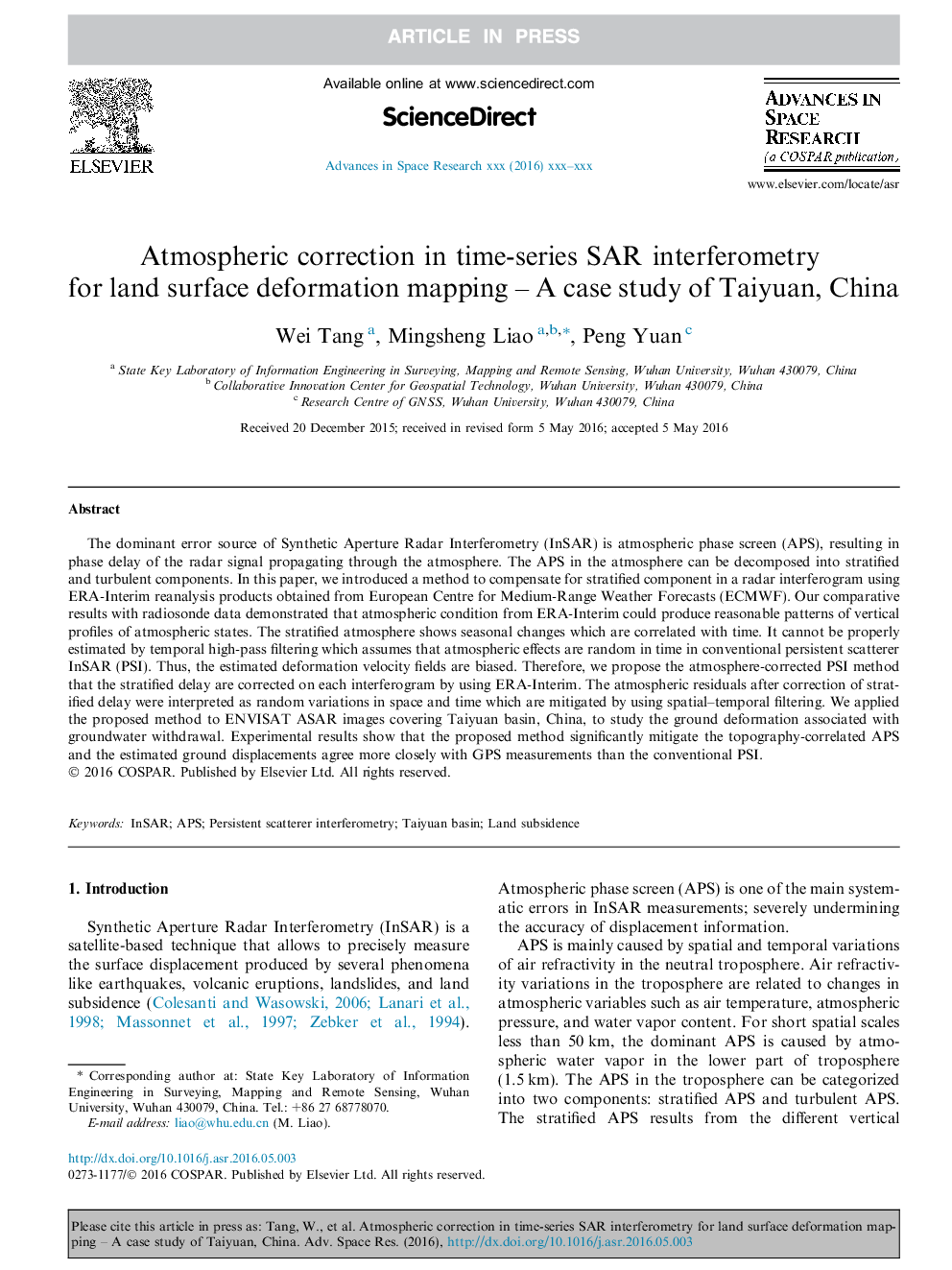| Article ID | Journal | Published Year | Pages | File Type |
|---|---|---|---|---|
| 10694095 | Advances in Space Research | 2016 | 16 Pages |
Abstract
The dominant error source of Synthetic Aperture Radar Interferometry (InSAR) is atmospheric phase screen (APS), resulting in phase delay of the radar signal propagating through the atmosphere. The APS in the atmosphere can be decomposed into stratified and turbulent components. In this paper, we introduced a method to compensate for stratified component in a radar interferogram using ERA-Interim reanalysis products obtained from European Centre for Medium-Range Weather Forecasts (ECMWF). Our comparative results with radiosonde data demonstrated that atmospheric condition from ERA-Interim could produce reasonable patterns of vertical profiles of atmospheric states. The stratified atmosphere shows seasonal changes which are correlated with time. It cannot be properly estimated by temporal high-pass filtering which assumes that atmospheric effects are random in time in conventional persistent scatterer InSAR (PSI). Thus, the estimated deformation velocity fields are biased. Therefore, we propose the atmosphere-corrected PSI method that the stratified delay are corrected on each interferogram by using ERA-Interim. The atmospheric residuals after correction of stratified delay were interpreted as random variations in space and time which are mitigated by using spatial-temporal filtering. We applied the proposed method to ENVISAT ASAR images covering Taiyuan basin, China, to study the ground deformation associated with groundwater withdrawal. Experimental results show that the proposed method significantly mitigate the topography-correlated APS and the estimated ground displacements agree more closely with GPS measurements than the conventional PSI.
Related Topics
Physical Sciences and Engineering
Earth and Planetary Sciences
Space and Planetary Science
Authors
Wei Tang, Mingsheng Liao, Peng Yuan,
